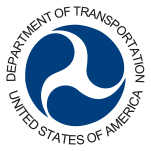Audit Reports
There Are Significant Differences Between FAA and Foreign Countries’ Processes for Operating Air Navigation Systems
Summary
As Congress, the Administration, and other stakeholders examine possible changes to the Federal Aviation Administration’s (FAA) organization and financing structures, OIG was asked to compare those structures to foreign nations’. Each of the four nations we examined—Canada, the United Kingdom, Germany, and France—has maintained government control of safety and regulatory functions but has commercialized their air traffic operations via independent air navigation service providers (ANSP). Unlike FAA, the ANSPs are financially self-supporting, and they do not embark on large modernization efforts or conduct extensive aviation research and development. While several differences make comparisons between the U.S. aviation system and other countries’ systems difficult—such as the size and complexity of the U.S. system—there are several lessons that can be learned from examining other nations’ experiences in separating their aviation functions, including issues related to maintaining safety oversight and transitioning to the new organization.
